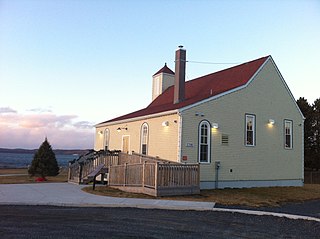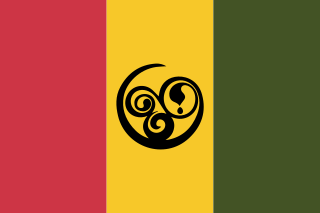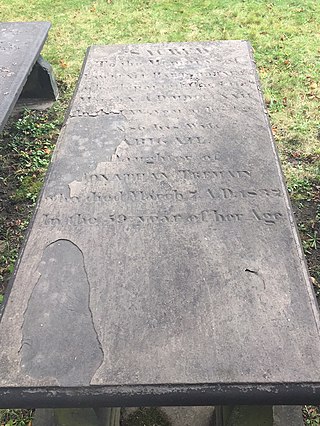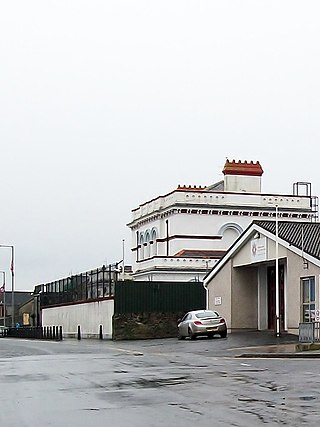
Africville was a small community of predominantly African Nova Scotians located in Halifax, Nova Scotia, Canada. It developed on the southern shore of Bedford Basin and existed from the early 1800s to the 1960s. From 1970 to the present, a protest has occupied space on the grounds. The government has recognized it as a commemorative site and established a museum here. The community has become an important symbol of Black Canadian identity, as an example of the "urban renewal" trend of the 1960s that razed similarly racialized neighbourhoods across Canada, and the struggle against racism.

The North End of Halifax is a neighbourhood of Halifax, Nova Scotia occupying the northern part of Halifax Peninsula immediately north of Downtown Halifax.
The Forde Inquiry (1998–1999), or formally the Commission of Inquiry into Abuse of Children in Queensland Institutions, was a special inquiry into child abuse in the state of Queensland, Australia, presided over by Leneen Forde AC, a former governor of Queensland. Assisting Ms Forde were Dr Jane Thomason and Mr Hans Heilperm.

Percy Alonzo Paris is a Canadian former politician from Nova Scotia. He represented the constituency of Waverley-Fall River-Beaver Bank in the Nova Scotia House of Assembly for the Nova Scotia New Democratic Party between 2006-2013.

Bringing Them Home is the 1997 Australian Report of the National Inquiry into the Separation of Aboriginal and Torres Strait Islander Children from Their Families. The report marked a pivotal moment in the controversy that has come to be known as the Stolen Generations.

Lieutenant John Clarkson was a Royal Navy officer and abolitionist, the younger brother of Thomas Clarkson, one of the central figures in the abolition of slavery in England and the British Empire at the close of the 18th century. As agent for the Sierra Leone Company, Lieutenant Clarkson was instrumental in the founding of Freetown, today Sierra Leone's capital city, as a haven for chiefly formerly enslaved African-Americans first relocated to Nova Scotia by the British military authorities following the American Revolutionary War.

Black Nova Scotians are Black Canadians whose ancestors primarily date back to the Colonial United States as slaves or freemen, later arriving in Nova Scotia, Canada, during the 18th and early 19th centuries. As of the 2021 Census of Canada, 28,220 Black people live in Nova Scotia, most in Halifax. Since the 1950s, numerous Black Nova Scotians have migrated to Toronto for its larger range of opportunities. Before the immigration reforms of 1967, Black Nova Scotians formed 37% of the total Black Canadian population.

The Book of Negroes is a document created by Brigadier General Samuel Birch, under the direction of Sir Guy Carleton, that records names and descriptions of 3,000 Black Loyalists, enslaved Africans who escaped to the British lines during the American Revolution and were evacuated to points in Nova Scotia as free people of colour.

Birchtown is a community and National Historic Site in the Canadian province of Nova Scotia, located near Shelburne in the Municipal District of Shelburne County. Founded in 1783, the village was the largest settlement of Black Loyalists and the largest free settlement of ethnic Africans in North America in the eighteenth century. The two other significant Black Loyalist communities established in Nova Scotia were Brindley town and Tracadie. Birchtown was named after British Brigadier General Samuel Birch, an official who helped lead the evacuation of Black Loyalists from New York.

The Nova Scotian Settlers, or Sierra Leone Settlers, were African Americans who founded the settlement of Freetown, Sierra Leone and the Colony of Sierra Leone, on March 11, 1792. The majority of these black American immigrants were among 3,000 African Americans, mostly former slaves, who had sought freedom and refuge with the British during the American Revolutionary War, leaving rebel masters. They became known as the Black Loyalists. The Nova Scotian settlers were jointly led by African American Thomas Peters, a former soldier, and English abolitionist John Clarkson. For most of the 19th century, the Settlers resided in Settler Town and remained a distinct ethnic group within the Freetown territory, tending to marry among themselves and with Europeans in the colony.
Allegations of abuse of children in certain institutions owned, managed, and largely staffed by the Sisters of Mercy, in Ireland, form a sub-set of allegations of child abuse made against Catholic clergy and members of Catholic religious institutes in several countries in the late 20th century. The abusive conduct allegedly perpetrated at institutions run by the Sisters of Mercy ranged from overuse of corporal punishment to emotional abuse, and included some accusations of sexual abuse by lay persons employed at the institutions.

The Mount Cashel Orphanage, known locally as the Mount Cashel Boys' Home, was a boys' orphanage located in St. John's, Newfoundland and Labrador, Canada. The orphanage was operated by the Congregation of Christian Brothers, and became infamous for a sexual abuse scandal, and cover-up by the Royal Newfoundland Constabulary and NL justice officials.
Forgotten Australians or care leavers are terms referring to the estimated 500,000 children who experienced care in institutions or outside a home setting in Australia during the 20th century. The Australian Senate committee used the term in the title of its report which resulted from its 2003–2004 "Inquiry into Children in Institutional Care", which looked primarily at those affected children who were not covered by the 1997 Bringing Them Home report, which focused on Aboriginal children, and the 2001 report Lost Innocents: Righting the Record which reported on an inquiry into child migrants.
The Nova Scotia Human Rights Commission was established in Nova Scotia, Canada in 1967 to administer the Nova Scotia Human Rights Act. The Nova Scotia Human Rights Commission is the first commission in Canada to engage a restorative dispute resolution process.

The Africville Apology was a formal pronouncement delivered on 24 February 2010 by the City of Halifax, Nova Scotia for the eviction and eventual destruction of Africville, a Black Nova Scotian community.

Iain Thomas Rankin is a Canadian politician who served as the 29th premier of Nova Scotia from February 23, 2021, to August 31, 2021. He serves in the Nova Scotia House of Assembly for the Nova Scotia Liberal Party, representing the electoral district of Timberlea-Prospect. Rankin was first elected in the 2013 Nova Scotia general election and was re-elected in the 2017 general election. On February 6, 2021, Rankin was announced the Leader of the Nova Scotia Liberal Party.

New Horizons Baptist Church is a Baptist church in Halifax, Nova Scotia that was established by Black Refugees in 1832. When the chapel was completed, black citizens of Halifax were reported to be proud because it was evidence that former slaves could establish their own institutions in Nova Scotia. Under the direction of Richard Preston, the church laid the foundation for social action to address the plight of Black Nova Scotians.

The 2014–2016 Northern Ireland Historical Institutional Abuse Inquiry, often referred to as the HIA Inquiry, is the largest inquiry into historical institutional sexual and physical abuse of children in UK legal history. Its remit covers institutions in Northern Ireland that provided residential care for children from 1922 to 1995, but excludes most church-run schools.

William Pearly Oliver worked at the Cornwallis Street Baptist Church for twenty-five years (1937–1962) and was instrumental in developing the four leading organizations to support Black Nova Scotians in the 20th century: Nova Scotia Association for the Advancement of Colored People (1945), the Nova Scotia Human Rights Commission (1967), the Black United Front (1969) and the Black Cultural Centre for Nova Scotia (1983). He was instrumental in supporting the case of Viola Desmond. Oliver was awarded the Order of Canada in 1984.
The Scottish Child Abuse Inquiry was established in October 2015 to inquire into cases of abuse of children in care in Scotland. It was to report and make recommendations within four years by 2019. But this deadline was later changed to "as soon as reasonably practicable". Concerns have been raised about mounting costs and delays in the Inquiry. Six years after the start of the on-going Inquiry and long after the original deadline, Lady Smith released a report which was critical of the previous Scottish Government for the 'woeful and avoidable' delay in setting up the Inquiry.













